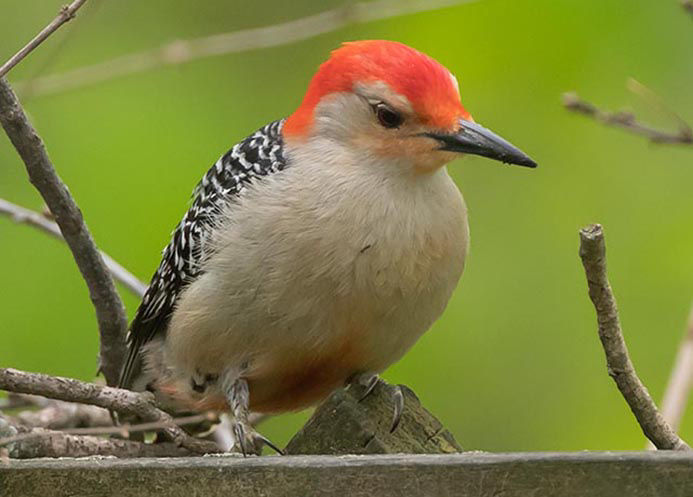Native Woodpeckers in Florida: A Guide to Species and Behaviors
Native Woodpeckers in Florida: A Guide to Species and Behaviors
Blog Article
Woodpeckers Unleashed: Exploring the Wonders of These Experienced Tree Mountain Climbers
Woodpeckers, with their distinct markings and rhythmic drumming echoing through wooded locations, hold an unique place in the avian globe. Their specialized makeup and adjustments allow them to browse vertical surfaces with unequaled ability. Their proficiency of tree climbing is simply one aspect of their fascinating behavior. As we dig right into the detailed details of woodpeckers' nesting behaviors, feeding strategies, and the recurring conservation efforts to protect these impressive birds, a deeper gratitude for their location in nature unfolds.
Composition and Adaptations
When analyzing the makeup and adaptations of woodpeckers, one can observe exceptional features that allow these birds to grow in their specialized environmental particular niche. Woodpeckers are equipped with a suite of one-of-a-kind physiological attributes that assist them in their woodpecking behavior. One of one of the most prominent functions is their solid, chisel-like beak, which is specialized for exploration right into wood to reveal pests or create nesting cavities. This beak is supported by solid neck muscles and a very developed skull structure that functions as a shock absorber, permitting woodpeckers to repeatedly peck at trees without causing mind injury. Additionally, woodpeckers have zygodactyl feet, with two toes facing onward and 2 encountering backwards, supplying a firm grasp on tree trunks while they look for food or drum for communication.
Additionally, woodpeckers have an one-of-a-kind tongue framework that is long, barbed, and sticky, allowing them to draw out insects from crevices in wood. This specialized adjustment permits woodpeckers to make use of a food source that is inaccessible to numerous other bird varieties. On the whole, the composition and adaptations of woodpeckers showcase the remarkable transformative services that have permitted these birds to prosper in their arboreal habitat.
Drumming Behavior
Having actually discovered the anatomy and adjustments of woodpeckers, the emphasis now changes to recognizing their drumming habits, a distinctive aspect of their interaction and territorial screens. Drumming is an important kind of interaction among woodpeckers, serving numerous functions such as establishing regions, drawing in mates, and signaling alarm system. Each woodpecker types has an unique drumming pattern that aids individuals identify members of their very own types and distinguish them from rivals or predators.
Woodpeckers generate drumming sounds by swiftly pecking on resonant surface areas such as dead trees, energy posts, or even steel things, producing a collection of rhythmic beats. The strength and rate of drumming can differ based on the objective; for circumstances, a rapid drumming sequence might signify aggressiveness in the direction of intruders, while a slower and softer drumming pattern can indicate courtship (Woodpeckers in Florida). Furthermore, woodpeckers may change the frequency and duration of their drumming to share particular messages properly
Nesting Habits
Discovering the nesting practices of woodpeckers exposes fascinating insights right into their reproductive behaviors and environment selections. Woodpeckers are understood for their one-of-a-kind top article nesting preferences, commonly digging deep into tooth cavities in trees to develop sheltered areas for elevating their young. These cavities serve not just as a nesting website but also as a protected sanctuary from killers and inclement weather condition.
Woodpeckers display a high degree of integrity to their nesting websites, frequently returning to the very same area time after time. This behavior highlights the value of appropriate environment availability for their reproductive success. The selection of a nesting site is vital for woodpeckers, with variables such as tree species, height, and decay stage playing substantial duties in their decision-making procedure.
Remarkably, some woodpecker types are understood to dig deep into several dental caries within their region, providing themselves with alternative nesting choices. This technique may act as a kind of insurance policy versus prospective threats or disruptions to their main nesting site.

Feeding Techniques
Woodpeckers utilize a variety of specialized feeding strategies to obtain their main food sources. One of the most distinctive feeding behaviors of woodpeckers is drumming, which entails fast pecking on trees to uncover pests beneath the bark. This drumming not only assists them situate victim however additionally serves as a way of interaction with other woodpeckers. Woodpeckers have strong, chisel-like beaks that enable them to pierce right into wood effortlessly. As soon as a hole is created, they utilize their lengthy, barbed tongues to remove insects such as ants, beetles, larvae, and spiders. These tongues are coated with sticky saliva that helps trap the victim. Woodpeckers are additionally recognized to excavate tooth cavities in trees to accessibility hidden insect larvae or sap. Some species, like the acorn woodpecker, store nuts in specifically developed openings called granaries. This tactical storing of food assists them endure throughout food deficiency durations. Woodpeckers are truly remarkable in their feeding techniques, showcasing versatility and intelligence in obtaining their nutrition.
Preservation Initiatives
Among the complex feeding strategies showed by woodpeckers, the conservation efforts aimed at protecting these fascinating birds play an important role in preserving their environments and populaces. Woodpeckers encounter different risks to their survival, consisting of habitat loss because of deforestation, environment modification modifying their you can try here ecological communities, and collisions with man-made frameworks such as structures and automobiles - Woodpeckers in Florida. Guardians are actively functioning to attend to these challenges and guarantee the lasting wellness of woodpecker species

Education and public recognition projects are likewise crucial components of woodpecker preservation initiatives. By elevating recognition about the importance of these birds in maintaining healthy and balanced woodland environments, guardians can garner support for environment preservation campaigns and promote responsible land monitoring methods. Through joint efforts between scientists, policymakers, and local go communities, we can interact to secure a future where woodpeckers thrive in their all-natural habitats.
Verdict

Report this page